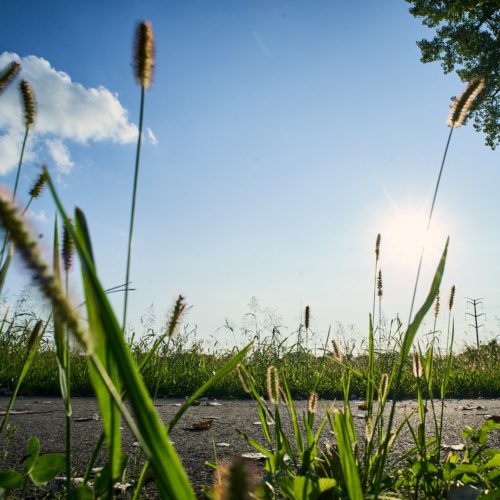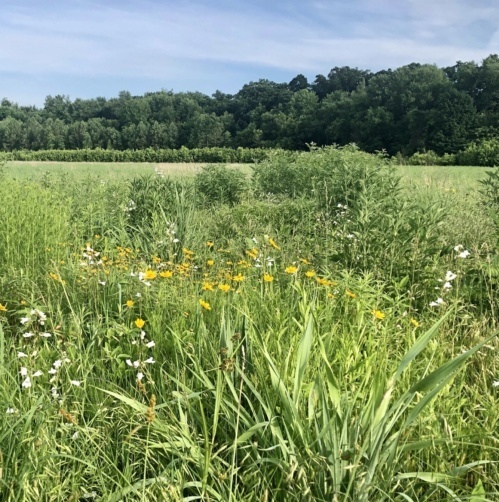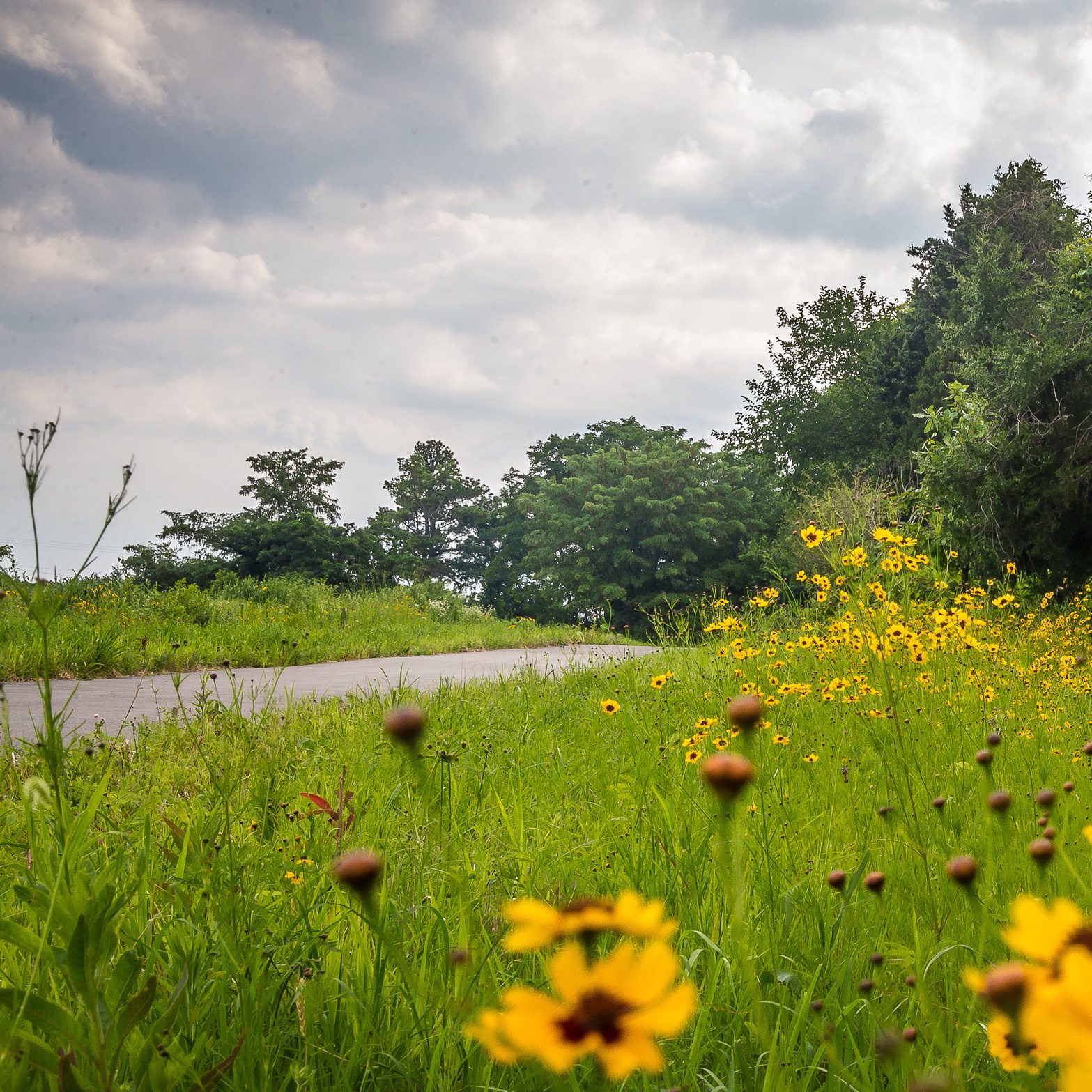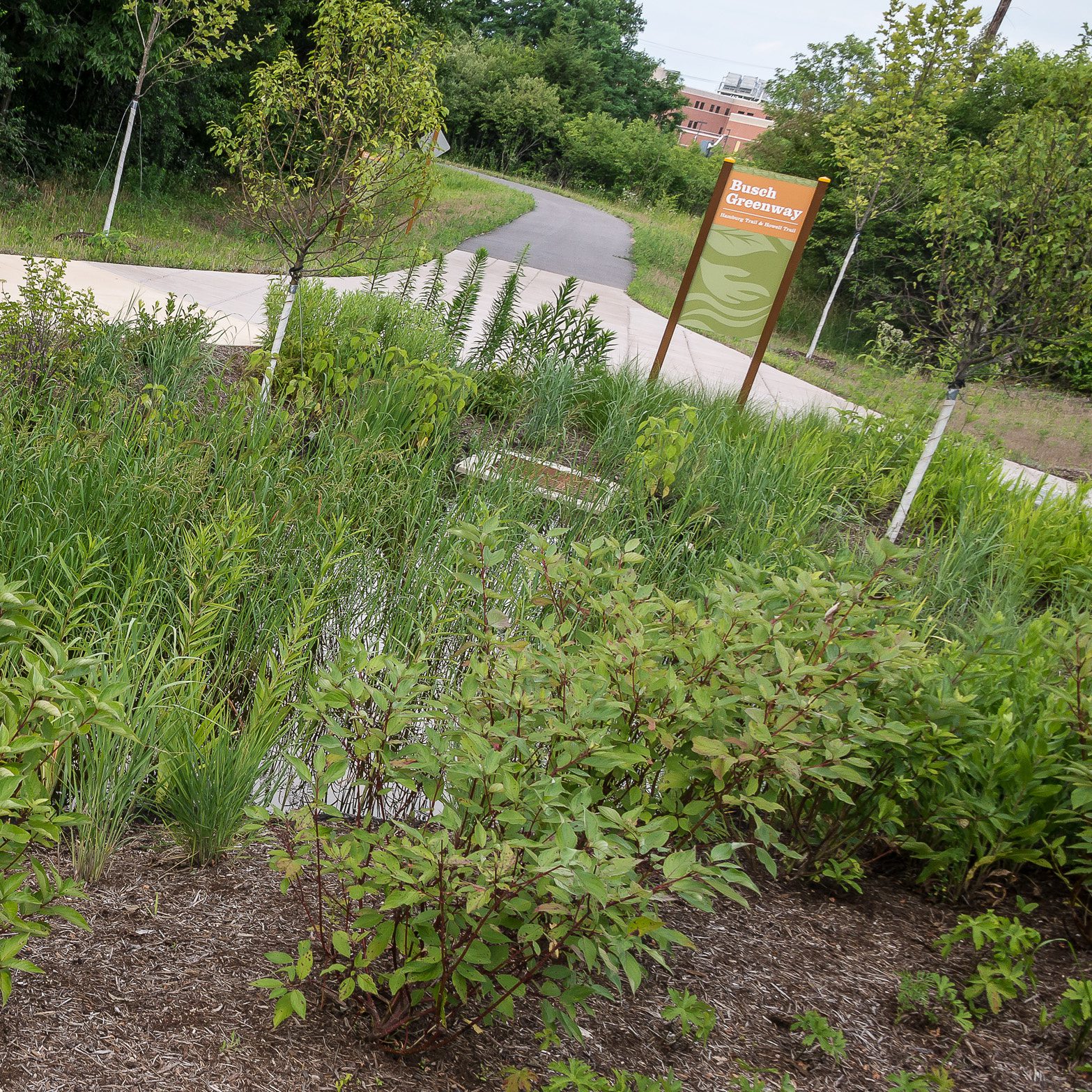Whenever possible, we incorporate habitat restoration into our greenway projects. One way is by removing invasive plants—such as bush honeysuckle—and replacing them with native plants and trees to improve habitat and support pollinators. We also create rain gardens filled with native plants that not only attract bees and butterflies, but also help capture and filter storm water runoff. Here are 5 places to find native plants (and the pollinators they attract!) along greenways:
Butterflies, Bees & Native Plants on the Greenways: 5 Places to Find Them Right Now
Posted on

Fee Fee Greenway
You can find little pockets of native plants and pollinators all along this greenway between McKelvey Woods and Creve Coeur Lake Park.
Visit Fee Fee Greenway
Dardenne Greenway : BaratHaven at Bluebird Meadow
Formerly a sod farm, it’s now a thriving prairie and natural floodplain for Dardenne Creek. It offers valuable resources to pollinators, birds and wildlife. It’s also a picturesque landscape enjoyed by the people who walk, ride or run along the greenway!
See the Prairie in Progross
Busch Greenway
There are native plants along the greenway through the Weldon Spring Conservation Area. You can also see a rain garden at the roundabout near the highway 94 underpass next to Francis Howell High School.
Visit Busch Greenway
St. Vincent Greenway at Trojan Park
The rain garden runs parallel to the greenway at this urban park at the corner of Etzel and North Skinker Parkway. It is not only beautiful to look at, but also an important resource for many species of birds, bees and butterflies.
Visit Trojan Park
Gravois Greenway at Mysun Charitable Foundation Trailhead
Prior to the construction of the new trailhead and greenway, this area was overgrown with invasive plants and trees. Stop by and check out the rain gardens and thriving native plant around the Mysun Charitable Foundation Trailhead. Just across the greenway, work is in underway to transform the site of a former driving range into a native prairie. Learn more about that project here.
Visit Gravois Greenway
What is a rain garden?
A rain garden is comprised of native shrubs, perennials, and flowers planted at the bottom of a slope or depressed area. Some rain gardens also have a layer of sand or a gravel bed beneath the surface to enhance drainage. When it rains, they temporarily hold and soak in water that runs off surrounding paved surfaces and lawns. By slowing down the water and letting it slowly drain into the ground (rather than directly into the storm sewer inlet) rain gardens can filter up to 90% of chemicals and 80% of sediment.
